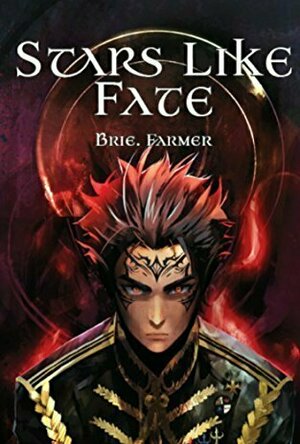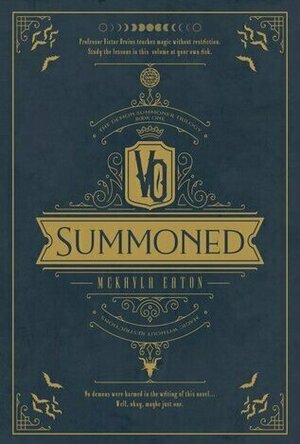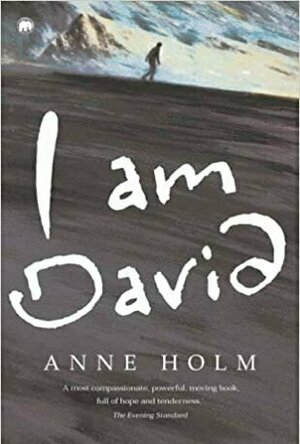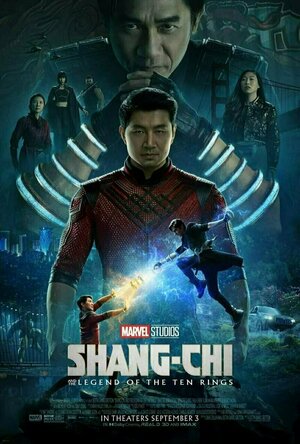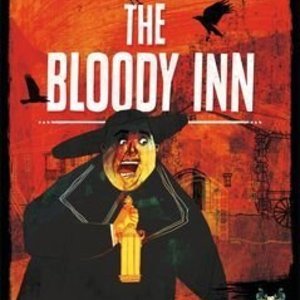Gareth von Kallenbach (980 KP) rated Why Him? (2016) in Movies
Jul 12, 2019
The highlights of this film include Cranston who reminds us that he has comedic timing from his years in Malcom in the Middle. His chemistry and timing is played well across Megan Mullally who perfectly delivers a few genuine laughs as a Midwestern suburban wife trying to maintain the niceties. Their son (Griffin Gluck) also adds to the humorous family affair as a teenage brother trying to be taken seriously as an adult but still being treated as a child. Lastly, the always funny Keegan-Michael Key hilariously plays Gustav, the “estate manager” to the tech-millionaire boyfriend and spices up the film every time he seems to appear.
James Franco on the other hand quickly wears out is welcome as the socially inept tech-millionaire boyfriend. At times he is funny, however after the dropping the “f-bomb” so many times you begin to sees him as a basic, depthless “caricature” only going for the low hanging fruit of crude jokes. Still, his crude, repeated, jokes are no longer funny after the first few times we see them. The film tries to give Franco some “mysterious depth” through an eluded troubled childhood and his genuine honesty. Only the film never gives you any payoff, as Franco’s character never actually evolves past his caricature shortcomings. It is a shame, because we actually like the girlfriend character (Zoey Deutch) and want to understand what she sees in Franco’s character, however since he never really evolves, there really is no reason to like or root for them to be together.
I also want to point out that this film acknowledges its biggest flaw. At one point in the film a character points out that there is a war going on between father and boyfriend, only the boyfriend isn’t actually fighting. That’s true, and thus there is no real conflict and no real reason to root for any of the characters. Franco’s boyfriend character never evolves past his caricature. While Cranston’s father character only evolves because the movie devolves into “paint by numbers” territory in the last 10 minutes. Since there is no one to root, we do not really care the outcome as we got our chuckles throughout the film but will forget about it shortly after walking out the theater.
Why Him? Has a solid cast, a few unexpected cameos and delivers constant chuckles throughout, however without giving us a likeable boyfriend or any characters to root for, the lack of memorable gut busting laughs has this film as nothing more than a typical forgettable comedy.
Becs (244 KP) rated Stars Like Fate in Books
Oct 2, 2019
Style: Casual to light
Point of View: Third person
Difficulty reading: First couple of chapters were difficult to get into but after the fifth chapter, I couldn’t put the book down! It has it’s fast-paced moments that has you flipping through pages and it has its slower moments that take a bit more effort to get into. A very fun read!
Promise: The book promised a fantasy, adventure packed book and it delivered it on a silver platter. The characters are mythical, the countries are mythical, and magic is involved – leading to the fantasy aspect of things. Nyole and Saphryis both go on a long and heartbreaking journey to gain Saphryis her memories and power back – leading to the adventure aspect of things.
Quality: An all-around great book. If you like World of Warcraft, you’ll like this book. It touches on the mythical creatures in a way that resembles characters in World of Warcraft.
Insights: I loved the fact that it was a fantasy young adult book. These types of books are one of my favorite genres. When I first got the book, I read the synopsis and instantly thought of World of Warcraft. Reading, I had a difficult time with the first five chapters. It wasn’t that they were bad, it was more along the lines of they lacked in the background and the flow seemed like it was all over the place. Once I hit chapter six though, I couldn’t put the book down. The background and plot leveled out so it was a much easier read. As I was coming down to the last couple of chapters, I realized I didn’t want it to end. I wanted it to continue on into an everlasting void of Stars Like Fate because fate is simply ineffable.
Ah-Ha Moment: When Nyole finally realized that he was related to King Aryon. I would also become furious if I was related to someone as cruel as King Aryon the murderer.
Favorite Quote: “Fate is unexplainable, Fate is unfair, but Fate will always happen.” – Nyole realizes that if he never would have met Saphryis, then he would have never known what was coming in the future. But with meeting her, he realizes what is coming and has a faint idea what Saphryis will mean to him.
“ ‘I need you to live, Saphryis. I need you around,’ Nyole murmured before adding a selfish wish. ‘I want you beside me.’ ” – I feel this is the moment that Nyole falls just a bit in love with Saphryis. Which is good, because I ship them 110%.
What will you gain: A love for a new and upcoming author with an imaginative world that you can just step right into. Plus an awesome book worth a re-read!
Aesthetics: Cover design was really nice, character list was great, nice size book – not too heavy and not to thin, font and size was good – didn’t strain the eyes, there were a few grammatical errors – but are barely noticeable, third-person point of view, a riveting action fantasy book that will keep you on your toes.
“Fate is simply ineffable.”
TRIGGER WARNINGS: Talk of death, violence
Review:
I want to thank The Parliament House for sending me an eBook ARC to read and review for my honest opinion. I originally rated this a 4 out of 5 stars but after much thought and consideration, I am dropping it to a 3.5 out of 5 stars.
Summoned follows Alton, a bored and seventeen year old who wishes to have a new tutor that allows a more challenging experience in Alton’s magic studies. This is where Professor Victor Orvius comes into play. He recruits Alton and another, named Reagan. The only rule these two must follow is that they follow all of Orvius’ rules. If the two do that, they will be taught magic without any limits.
What Alton wasn’t expecting was to be met with such a sarcastic and brash young witch. He becomes star struck with Reagan and the two clash, becoming rivals. That is until the two must join forces because a greater threat has been summoned, a demon.
When I first picked up Summoned by McKayla Eaton, I wasn’t fully invested into the story. I didn’t get into the story until the half way point, and that was when the plot actually started getting good. Don’t get me wrong, this was an extremely easy read and I ended up blowing through it with the little spurts of time I was able to read. But something was lacking a bit.
Alton and Reagan were both relatable and not at the same time. They seemed almost “two perfect for relatability” yet they did things that I could see a teenager doing now-a-days. The whole story gave an almost Harry Potter like feel with the rebellious and angsty teenager (Reagan basically was Draco), the studious and rule follower (Alton was basically Harry Potter mixed with Hermione Granger), and the adult who maintained a large distance from his students and seemed wise beyond his years (Orvius was basically Dumbledore). I loved the vibes I was getting and I wanted to continue reading to find out what happened.
But I was met with a bit of disappointment and a cringe fest. The humor and banter was a bit much at times. The action was interesting and progressed the plot but there were also times where it seemed to slow the plot of the story. There was a ton of character development that helped even some of the plot holes but those missing plot holes really put a damper on reading.
The ending on the other hand was good and left on a major cliffhanger, but it also really felt like it was moving extremely fast. This is where some of those plot holes come into play. This is the first book in the series, so it could have been just groundwork being laid but some may find the plot holes to be a determent from picking up this book.
Is it worth the read? Yes.
Would I reread? Probably not. Don’t get me wrong, it was good and entertaining, but the plot holes really were a determent for me.
Will I continue the series? I’m honestly not 100% sure. I would like to know more about the story and see how the rest of the story unfolds, but I’m also not rushing to read them.
“Life wouldn’t be any fun if you didn’t break the rules sometimes, Alton.“

Pigment - Adult Coloring Book
Entertainment and Book
App
Pigment is the ultimate stress reliever on the go! Take a break and relax with this unique coloring...

Life Period Tracker, Health, Calendar, Ovulation
Health & Fitness and Lifestyle
App
Life Period Tracker lets you track your period, predict your ovulation, schedule cycle reminders,...
Ivana A. | Diary of Difference (1171 KP) rated I Am David in Books
Aug 3, 2020
<a href="https://diaryofdifference.com/">Blog</a>; | <a href="https://www.facebook.com/diaryofdifference/">Facebook</a>; | <a href="https://twitter.com/DiaryDifference">Twitter</a>; | <a href="https://www.instagram.com/diaryofdifference/">Instagram</a>; | <a href="https://www.pinterest.co.uk/diaryofdifference/pins/">Pinterest</a>;
<img src="https://diaryofdifference.com/wp-content/uploads/2020/05/Book-Review-Banner-49.png"/>;
<b><i>"You can't change others, but you can do something about a fault in yourself."</i></b>
I Am David by Anne Holm is a very interesting and emotionally powerful story about a young boy. David was born and raised in a prison when one day, he is given a backpack and a few instructions to escape and find his way to Denmark.
During this time, we follow David's adventure and his thoughts. He is programmed to not trust anyone and to escape as soon as he smells any danger coming his way. Throughout his journey, we can see that David goes through a lot of hardship and he meets many people, even though he fails to connect with them or entrust them with anything. Good people are somehow always there to help him, and I have to be honest and mention that I found this to be incredibly convenient to the story and in no way believable.
Besides this fact, we get to see David be his true self at all times, which is something I enjoyed about this book. There are instances where he has to make choices that require him to pretend and be something he is not, and he chooses to stay true to himself. Some times, these choices mean he has to give up the comforts of his new-found life, a bed to sleep in and food that is always on the table.
<b><i>"And if you never allow other people to influence what you're really like, then you've something no one can take from you - not even they."</i></b>
David's adventure will teach him many things.
Some of these traits he already knew of by seeing them in others, but now he will learn to possess them himself. Honesty, bravery, kindness. But there is one thing David never knew before: true happiness.
<b><i>"Joy passed, but happiness never completely disappeared: a touch of it remain to remind one it had been there."</i></b>
Even though I loved this book for all the right reasons, I couldn't help but notice the red flags. The parents in this book seemed to believe David's ridiculous story about the circus. They also invited him into his home without any doubts. And the most important part - David was a manipulator. Getting close to the little girl, as well as he showed open hatred towards one of the boys. And the parents were aware of all this, and still didn't seem that concerned. I understand where David came from - the way he behaved was all he's ever known. What I cannot understand was how the parents were portrayed in the book.
The ending seemed quite fast paced, even rushed. The outcome was predictable. I still manage to find the whole story unbelievable though. I recommend it to children, for the lesson of being yourself. However, I don't think that as an adult you would enjoy it.
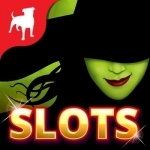
Hit it Rich! Casino Slots
Games and Entertainment
App
Hit it Rich! Slots is the biggest collection of slot machine games based off of some of your...
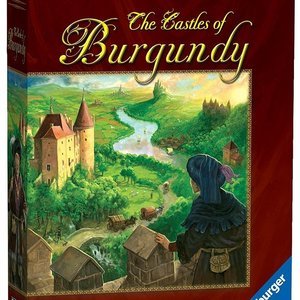
The Castles of Burgundy
Tabletop Game
The game is set in the Burgundy region of High Medieval France. Each player takes on the role of an...
Boardgames FeldGames
Gareth von Kallenbach (980 KP) rated Shang-Chi and the Legend of the Ten Rings (2021) in Movies
Aug 23, 2021
The film introduces audiences to Shang Chi (Simu Liu); an easygoing San Francisco resident who spends his time parking cars and hanging out with his friend Katy (Awkwafina) and her family.
Life is steady if unspectacular until he is accosted on a city bus by a group looking to take a pendant his mother gave him. When Shang Chi shocks Katy and the occupants of the bus with his martial arts abilities; he attempts to find his sister Xialing (Meng’er Zhang); who runs an underground fight club. While Xialing is estranged from her brother; their father Wenwu (Tony Chiu-Wai Leung) has conspired to bring them and their pendants before him.
Their father uses the power of sacred devices known as the Ten Rings to rule for over a thousand years and destroys all who would oppose him thanks to their power and the army he has gathered over the centuries.
Wenwu wants to revive their long-dead mother as he is convinced that she is calling to him and he wants to be with her as he was able to be a better man and forsake the power and abilities the rings offered him.
When it is learned that Wenwu plans to go to a mythical realm that their mother came from and free her or burn the place to the ground; Shang Chi must make some hard choices between family and doing what he believes is right.
What follows is an action-filled thriller with plenty of mysticism and humor. The film has a very engaging visual style that combines Asian and Western cinematic styles which results in some very engaging visuals as well as action sequences.
What really sets the film apart from many Super Hero films is that the characters have a solid base to them as they have a complexity to them in regards to their past and their motivations. Their relationships with one another are key to the film as family, honor, and justice are key elements to the film but they are not given lip service but are developed well along with their characters.
While the final act may be a bit FX heavy for some; I found it in keeping with the story and the characters and the great Sir Ben Kingsley provides some very welcome comic relief in his return as Trevor.
Awkwafina is also great as she provides some very laugh-out-loud moments but is not afraid to mix it up when the situation calls for him. Simu Liu was very enjoyable in the lead role as he performed the physical aspects of his character well but added a restrained sensitivity to his character as he is a complicated individual who is conflicted by choices he made in his youth and the ramifications of them now as an adult.
There are bonus scenes that set up future adventures well including one that will no doubt have Marvel fans heatedly debating when the film premieres.
Once again Marvel has shown why they have had such a sustained success with their films as they have done a great job again of introducing a new character to the Cinematic Universe but also connecting him to their cinematic past and future.
4 stars out of 5
Purple Phoenix Games (2266 KP) rated The Bloody Inn in Tabletop Games
Feb 12, 2022
The Bloody Inn is a card-drafting, hand management, horror game of recruiting accomplices and having them carry out dastardly deeds to secure the most money at the end of the game. In it, players take on the roles of one of the inn’s staff members and control pawns in their evil schemes in order to swindle and kill for mountains of francs (it’s set in France, pre-Euro).
To setup, place the main board on the table, give each player the components of their color choice, two Peasant cards, a 10 franc (f) check, and a player aid card. The “traveler deck” is assembled and shuffled per the rules, and placed on the Entrance side of the board. Players choose one room to place a key token in their color, and several gray neutral key tokens are placed in other rooms. Unsuspecting travelers will be staying in these rooms each night. Per the rules, the greediest player is given the first player card and the mischief may begin!
The Bloody Inn is played over several rounds, and each round has players completing three phases: Welcome Travelers, Player Actions, and End of Round. Players will Welcome Travelers to signify the start of the round by the first player drawing one card from the deck at a time and choosing in which room they will be placed.
After Travelers have been welcomed and turn in for the evening, the second phase may begin: Player Actions. In turn order players will be able to perform two actions each round. Players may choose from five different actions, and actions can be repeated for the second action of the round. Players may Bribe a Guest by discarding cards from hand equal to the printed value on the target card’s front. Initially all players simply employ the two starter Peasants, so Bribing is only performed on cards that show a value of 0-2. When a player Bribes a guest, they essentially spend cards from hand to recruit the new guest to their employ. These new employees (accomplices) are then available to be used on future actions. One or two Peasants may also be Bribed from the bistro, adding to a player’s hand of usable human resources.
A player may instead choose to Kill a Guest by similarly discarding the appropriate number of accomplices and adding the freshly-slain guest to their tableau, face-down. The card backs feature a coffin with their “rank” (action number) printed on it. Corpses normally cause no issues, but they will need to be buried under an Annex in order to collect the money in their pockets. Players may use an action to Build an Annex by discarding the appropriate number of accomplices and using a card from hand to build and staff the Annex. Annexes can be used for the action printed on the card bottom, and/or as a housing for corpses, with the Corpses being sent to any player’s Annex via the Bury a Corpse action. Discard the requisite number of accomplices to bury a corpse, and avoid suspicion from the Law.
If none of these actions are attractive to the player, or if they simply wish, they may instead Pass and launder money from the village notary. To do this, either reduce the number of francs from the Wealth Track on the main board in order to gain a 10f check, or turn in a check for 10f on the Wealth Track.
Once all players have taken their two actions, the End of Round is performed. Firstly, if any Travelers remain belonging to the Police type (signified by pistol icons on the top of the card), they will conduct an investigation, finding any unburied corpses. Should a corpse be found in this way, the owning player will need to pay 10f for the local undertaker to dispose of the body respectfully. This not only costs the player 10f, but also the amount of money that could have been gained if they had only buried them or dealt with the Police traveler prior. Next, the Travelers who remain all wake up feeling refreshed and leave the inn by being placed in the discard pile. Once the board has been cleared of all Travelers, accomplices must be paid their wages for their help. For each accomplice in hand, the players must pay 1f from the Wealth Track.
Play continues in this fashion until the main Traveler deck has been depleted twice. Then, players add up their francs and the player with the most in francs and checks is the winner, and just the greatest little murderer/robber/briber in all the land!
Components. This game really has a modest amount of components, but they are all similarly great quality. The main board acts as the inn’s room display, the Wealth Track, AND the bistro (where Peasants are discarded, as opposed to being placed in the normal discard pile). I love when components pull double or triple duty. That said, the player aids not only remind the players of the phases and actions from which they may choose, but it also provides the player with a starter Annex that can be used to bury their first corpse! HOW COOL IS THAT?! However, the greatest thing that stands out in regards to the components is the overall look and feel of the game. The character artist for this one is Weberson Santiago, and he has also illustrated games such as the new Quest (the new version of The Resistance: Avalon), Coup, and the new Whirling Witchcraft. I adore his art style, even though I shouldn’t. My typical preference of character art is semi-realism (like that of Kwanchai Moriya), but this style is really unique and perfectly applied to the theme. Great matchup of artist and game here. I do have one silly wish for this game: PLEASE change the player colors. I mean, I am so tired of having the choice between red, blue, green, and yellow. Take a Cue from my good friend Scott Brady and use one of the more interesting color choices. I mean, even to fit in with the theme here a more appropriate palette could include a brown, black, orange, and yellow or something. Be bold!!
I knew right away that this was a great game for me. Yes, the theme is super dark and macabre, which is rare for me to enjoy, but I would only play this with adults anyway so I am unbothered by it. However, the puzzle that lies within this box is one that I thoroughly enjoy solving every round. What I neglected to mention up top is the fact that when actions are taken (Bribing, Killing, Building Annexes, and Burying Corpses) if you happen to have certain card types in hand, then the cost of discards is reduced by the number of cards present. For example, if I were to Bribe a Police card from the rooms in my first action, they have an affinity for killing (messed up, I know) and will thus help me to perform a Kill action on the next turn by reducing the number of accomplices I would need to discard for that action. Side benefit: by taking the Police Travelers off the board, they then will not perform their investigations in the morning.
Another aspect I truly enjoy about The Bloody Inn is that many cards have that dual-purpose mechanic I appreciate. The player aid is also an Annex. Brilliant! Many of the Annex cards can also offer one-time or recurring powers. It’s just so satisfying to grab cards that can combo well with each other in order to fulfill your evil plans. Every card is important, and when they can offer more than one benefit, I am a happy gamer.
I cannot express how happy I am to have decided to purchase this one. I have seen the BGG ratings and rankings, but always thought I wouldn’t like it due to its very adult theme, but boy was I wrong! This is one of the best games I have played recently and I hope to even bling it out a bit, maybe even with new player colors like I suggested earlier. Laura and my wife were able to join me for this one and they agree with me – this one is excellent and definitely worth consideration into anyone’s collection. Purple Phoenix Games gives this one a dastardly 15 / 18. Yeah, it’s perfect for Halloweentime, but also for ANY time. If you are looking for something a little grim and grisly with lighter rules and lots of interesting choices, you need to check out The Bloody Inn. Grab lots of Police cards and go on a killing spree for me!

